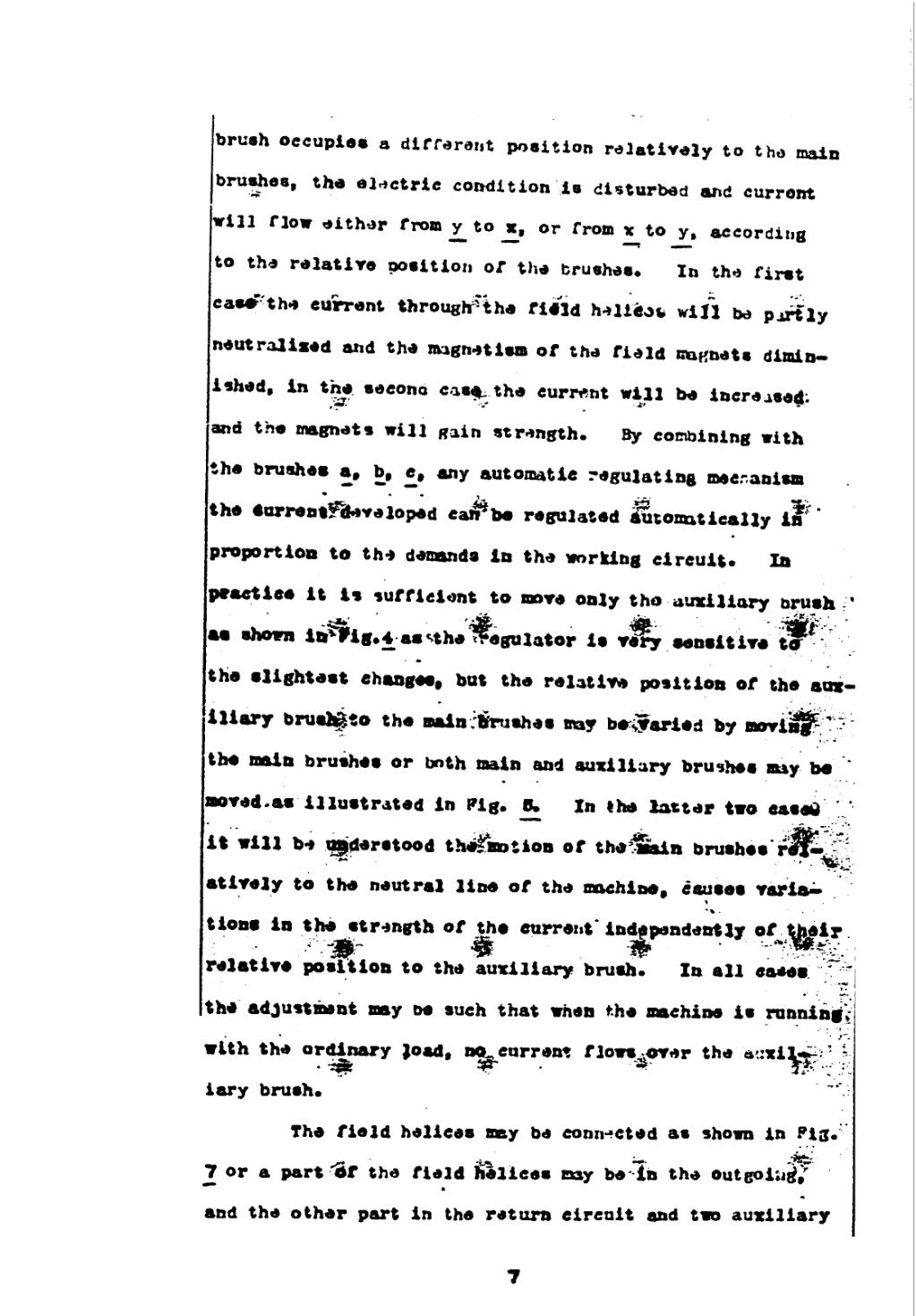brush occupies a different position relatively to the main brushes, the electric condition is disturbed and current will flow either from y to x, or from x to y, according to the relative position of the brushes. In the first case the current through the field helices will be partly neutralized and the magnetism of the field magnets diminished, in the second case the current will be increased and the magnets will gain strength. By combining with the brushes a, b, c, any automatic regulating mechanism the current developed can be regulated automatically in proportion to the demands in the working circuit. In practice it is sufficient to move only the auxiliary brush as shown in Fig. 4 as the regulator is very sensitive to the slightest changes, but the relative position of the auxiliary brush to the main brushes may be varied by moving the main brushes or both main and auxiliary brushes may be moved as illustrated in Fig. 5. In the latter two cases it will be understood the motion of the main brushes relatively to the neutral line of the machine, causes variations in the strength of the current independently of their relative position to the auxiliary brush. In all cases the adjustment may be such that when the machine is running with the ordinary load, no current flows over the auxiliary brush.
The field helices may be connected as shown in Fig. 7 or a part of the field helices may be in the outgoing, and the other part in the return circuit and two auxiliary

